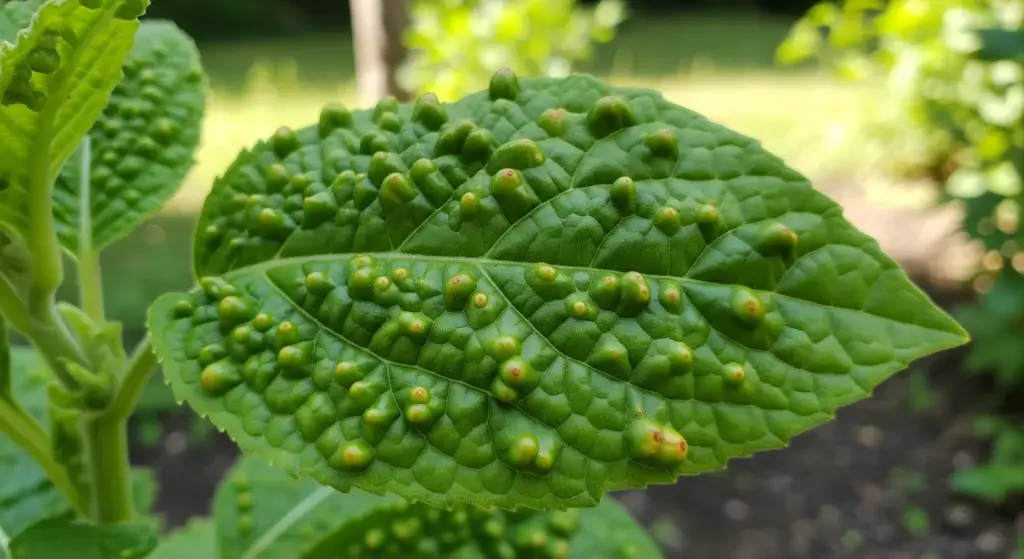
Celery may like it cool, but winter can still do it dirty—think slow growth, floppy leaves, and frostbite that makes it look like it just lost a battle in Game of Thrones.
Whether you’re gardening in your backyard or playing plant parent in a greenhouse, winter is no joke.
But good news: with a few easy tricks, you can help your celery survive (and thrive) like it’s training for the veggie Olympics.
Think of it as putting your plants in a warm hoodie and giving them a pep talk.
Understanding Celery’s Winter Needs
Celery (aka Apium graveolens if we’re being fancy) is basically the Goldilocks of the garden—likes it not too hot, not too cold.
It thrives best between 50°F and 70°F (that’s 10°C to 21°C for our metric friends).
A little light frost? Sure, it can handle it like a champ.
But full-on winter freeze? That’s when things get dicey—cue sad, wilted stalks and roots that look like they’ve seen some things.
So what does winter care really mean? It’s all about playing defense:
- Keep the temp cozy (no one wants frosty stalk syndrome)
- Insulate the soil like you’re tucking it in with a warm blanket
- Manage moisture so it doesn’t drown or dry out—yes, celery is that dramatic
Think of celery as the high-maintenance character in your garden’s reality show.
It’s not impossible to please—you just need to know its quirks.
And if you treat it right, it’ll reward you with sweet, crunchy stalks that are way better than anything you’ll get from the store.

Site Selection and Soil Preparation
Before winter rolls in like the final season of a dramatic Netflix show, set your celery up for success by giving it the right home.
This isn’t just about throwing seeds in dirt and hoping for the best—celery’s picky, and winter’s harsh.
Let’s get it right from the start. Here’s the cheat sheet:
- Sunlight is life: Even in winter, your celery needs at least 6 hours of direct sun. No shady business—literally.
- Soil drama: Go for soil that drains well but still holds moisture (yes, celery wants both—it’s complicated). Rich, loamy stuff full of organic matter is the dream.
- pH realness: Keep the soil slightly acidic to neutral—between 6.0 and 7.0. Celery’s not into extremes.
- Compost is magic: Mix in aged compost or manure before the cold hits. Think of it as a nutrient-packed pre-winter snack.
Pro tip: Raised beds = total game-changer. They drain better, warm up faster, and are way easier to insulate. It’s basically giving your celery a cozy winter cabin.
Mulching for Moisture and Warmth
Mulch isn’t optional—it’s your celery’s winter survival blanket.
Seriously, skipping mulch in cold weather is like sending your plants into a snowstorm in flip-flops.
Don’t do that to your stalks.
Mulch does two major things:
- Keeps roots warm (like a fuzzy pair of socks for the soil)
- Locks in moisture (because winter winds are basically plant dehydration machines)
Here’s what works best:
- Straw or hay (pile it on 2–3 inches thick—don’t be shy)
- Shredded leaves (free, natural, and your trees probably already made some for you)
- Composted bark or wood chips (fancy, and gives off “forest floor chic” vibes)
Benefits of mulching
- Stops roots from freezing like Elsa just strolled through your garden
- Cuts down on water loss so you don’t have to play hose hero every day
- Keeps weeds in check—because no one invited them to this veggie party
Watering Tips in Cold Weather
Celery may seem chill (literally), but it’s kind of a diva when it comes to water—even in cold weather.
If you want those stalks to stay crisp and juicy (not floppy like week-old lettuce), you’ve gotta keep the hydration game strong without going overboard.
Root rot? Yeah, that’s celery’s personal horror movie.
Here’s how to hydrate without harm:
- Water in the morning—Give the soil time to dry out before the frosty night rolls in. It’s like giving your plants a full day to towel off.
- Do the finger test—Stick your finger in the soil (yes, really). If the top inch feels dry, it’s time to water. If it’s damp, step away from the hose.
- Use drip or soaker hoses—Keeps the water where it matters (the roots), not all over the leaves like a surprise ice bucket challenge.
- Skip overhead watering in cold weather—Wet leaves + freezing temps = frosty plant drama no one asked for.
Basically, celery wants regular sips, not a winter waterpark.
Keep it consistent, keep it low and slow, and your plants will stay hydrated and happy—even when the temps drop like it’s January in Winterfell.

Frost Protection Strategies
Mature celery can handle a light frost like a seasoned warrior.
But baby plants? They’re more like the scared intern on day one—cute, green, and not ready for a freeze attack.
Here’s how to armor up your celery when Jack Frost starts creeping:
- Row covers: These are like the plant version of a cozy hoodie. Lightweight, breathable, and still let in sunlight—because celery still needs its daily dose of vitamin D.
- Cloches: Fancy name, simple tool. Think of them as tiny glass helmets for your individual plants. They trap heat and humidity like a mini spa day.
- Cold frames: Got a bunch of celery plants? Slide them into a cold frame and boom—it’s like a budget-friendly greenhouse. Warm, safe, and wind-proof.
- Old-school blanketing: When temps really drop, cover your plants at night with burlap or an old sheet. Just remember to uncover them in the morning or you’ll block the sun—and that’s just rude.
Fun fact: According to the plant nerds over at the University of Maryland Extension, celery can survive down to 26°F (-3°C) if it’s bundled up right. Basically, dress your plants like you would a toddler on a snow day: in layers, and with love.
Pruning and Pest Control
Just because it’s cold doesn’t mean the creepy crawlies take the season off.
Celery might be bundled up for winter, but pests and fungi? They’re still out here trying to cause drama like it’s reality TV for plants.
Here’s how to keep your celery stalks scandal-free:
- Snip the sad stuff – Prune off yellow or damaged leaves like you’re giving your plant a fresh haircut. It helps stop fungal infections before they start. No dead weight allowed!
- Lift the mulch and peek – Aphids and slugs love to sneak under mulch like they’re hiding from chores. Check often and evict them ASAP.
- Go natural– Spray with organic neem oil or sprinkle diatomaceous earth like you’re seasoning your garden with pest repellent magic. Both are safe and effective—no toxic vibes here.
- Crop rotation = soil reset – Don’t plant celery in the same spot every year. Switching it up keeps soil-borne diseases from getting comfy.
Skip harsh chemicals – Winter is not the time for heavy-duty pesticides.
They mess with your soil’s good microbes—and those little guys are basically the unsung heroes keeping your celery healthy and strong.
When and How to Harvest Winter Celery
Winter celery might grow slower than a plot twist in Stranger Things, but here’s the reward: it’s way more flavorful.
Cold temps slow down sugar conversion, which means sweeter, snappier stalks that taste like they actually belong in your soup, not as a sad garnish.
How to know it’s go-time:
- Wait until stalks are about 8–10 inches tall and have beefed up a bit—no skinny legends here.
- Grab a sharp knife (no butter knives, please) and cut at the base, right where the stalks meet the soil.
- Want a longer harvest party? Just snip off the outer stalks and let the center keep growing like a comeback tour.
Storage tip:
Wrap those stalks in a damp paper towel, toss them in a container or bag, and pop them in the fridge.
They’ll stay fresh for up to two weeks—plenty of time for soups, stews, or your next homemade Bloody Mary.

Common Mistakes to Avoid
Even green thumbs slip up sometimes. Here are the classic celery slip-and-falls to dodge:
- Overwatering: Too much love = root rot. Especially when soil’s cold and soggy—your celery’s basically drowning in a bad romance.
- Skipping mulch: Leaving roots bare in winter is like sending your celery out without a jacket—frostbite incoming.
- Neglecting sunlight: Winter days are short, so every hour of sun counts. Don’t leave your celery hanging in the shade like a forgotten sidekick.
- Inconsistent care: Forget watering or checking on your plants for a week, and you’ll stunt their growth faster than a canceled Netflix show.
Pro move: Set a simple weekly routine. Water, inspect for pests, fluff that mulch, and check your frost covers. Treat it like your favorite TV series—don’t skip episodes.
Conclusion: Winter Celery Care Is All About Consistency
Taking care of celery in winter might feel like a boss-level gardening quest, but really, it boils down to a few steady habits: keep it warm, keep it watered, and keep it shielded from the cold drama.
Nail these, and your celery will not just survive winter—it’ll thrive, rewarding you with crisp, flavorful stalks that make salads, soups, and snacks sing all season long.
So, roll up your sleeves, channel your inner plant whisperer, and let your celery show off its winter swagger. You’ve got this.



